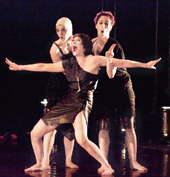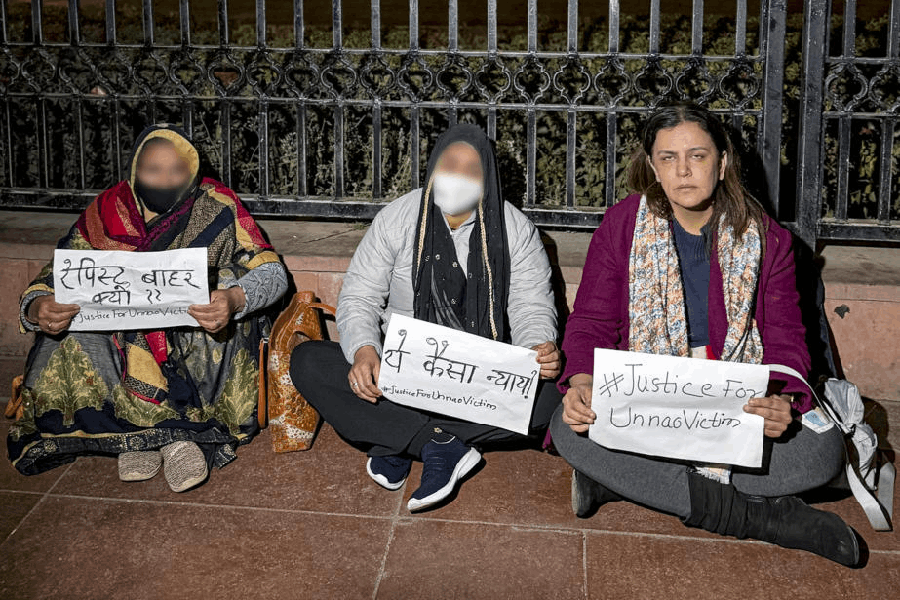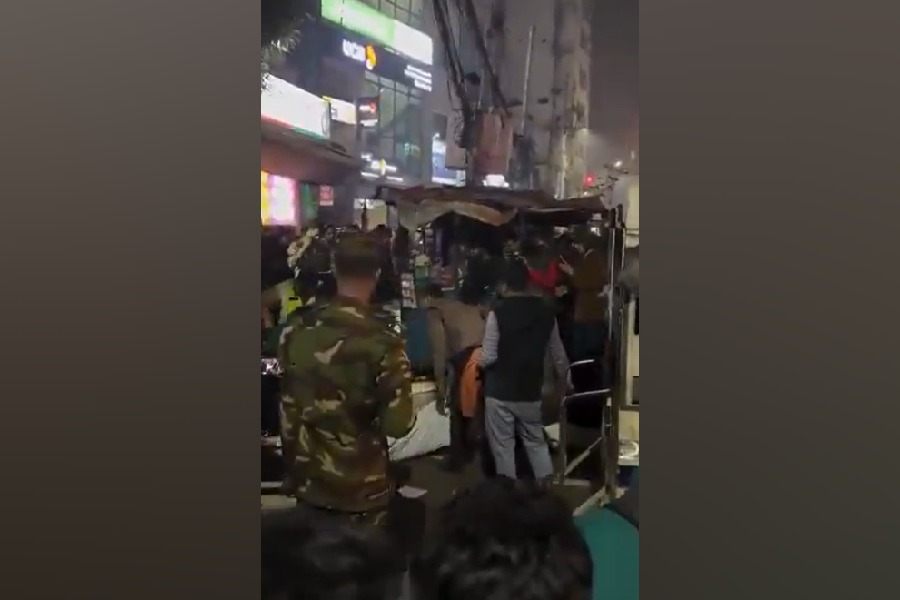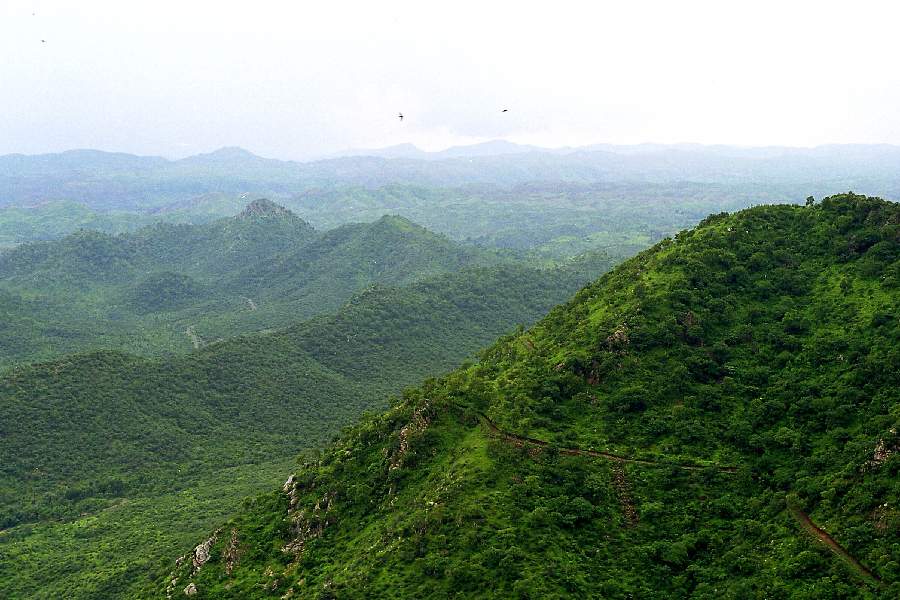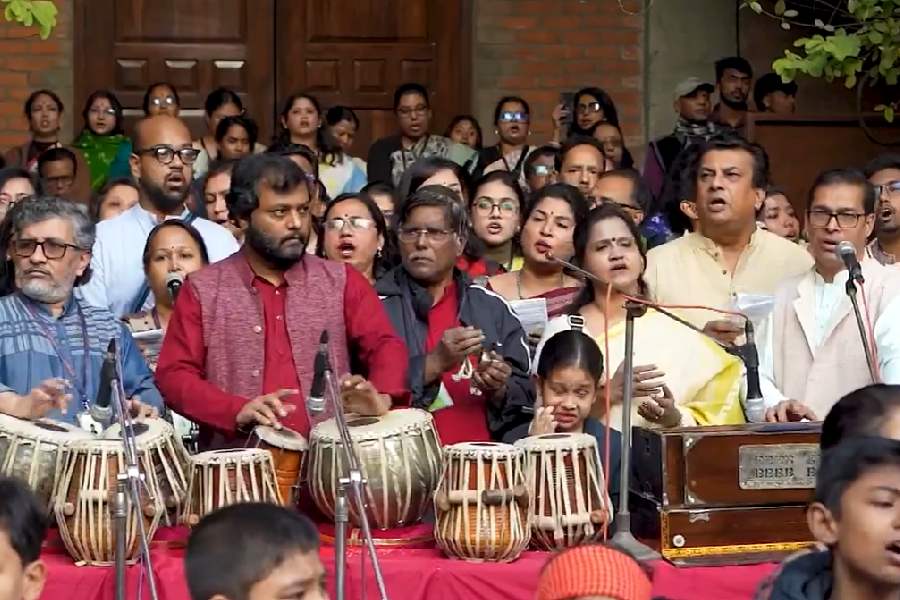 |
| Swan Lake at GD Birla Sabhagar |
Israeli choreographer Idan Cohen’s troupe presented Swan Lake, a thought-provoking deconstruction of the iconic ballet, at the GD Birla Sabhagar on September 23. The performance was part of Interface 2010, a five-day theatre and dance festival of contemporary, alternative art forms.
Swan Lake used the Tchaikovsky score but instead of presenting graceful ballet dancers in tutus, it had them dressed in black. “Ballet dancers are expected to be aesthetically appealing. The idea here was to show ourselves as we are,” said Cohen. To add to the “real” feel, 40kg of tomatoes was bought from Sealdah market as props. The performers danced on them, to symbolise the rain of rotten eggs and tomatoes that often greet such experimental art forms. Tomatoes bursting under the dancers’ feet also signified a not-so-romantic lake.
 |
| A dancer performing on tomatoes |
The creative performances included Lala Land presented by Jacek Luminski’s Silesian Dance Theatre Company from Poland. Here, the dancers through a trance-like movement recreated a longing for a spontaneous, sensitive, imaginative and pre-digital society.
Other notable performances included an abstract rendering of the concept of Maya by Veena Basavarajaiah and Rudali presented by Rangakarmee. Dance troupe Sapphire was the chief organiser of the event.
For a free TV
 |
A buyer asked a shopkeeper to give him a particular brand of detergent with his monthly grocery kit. No, not for its safedi ki chamak, but because his television needed repair. But he would not spend a paisa more on the old television or on a new one. So he would go on buying this detergent powder till another advertiser came up with the promise of a free television set.
(Contributed by Sebanti Sarkar, Saionee Chakraborty and Sudeshna Banerjee)
 |
Three-piece wonder
Going by the modern trend, some prefer the six-yard traditional sari in three pieces. A few such saris were found stocked in a five-storey sari mall at Gariahat. Even the proprietor of Adi Dhakeshwari Bastralaya, Sanjay Saha, could not suppress his wonder as he displayed the newest acquisition to Puja shoppers. “I have never seen anything like this,” he said.
The longest piece of the sari needs to be draped as a mekhla. It is too short to allow pleats. Another piece is the blouse that has to be stitched according to one’s size. The third piece is the anchal, but it requires no draping on one’s shoulder. The piece itself is a combination of two triangular pieces, the narrow ends of which are stitched together. This tapered bridge is what sits easy on the shoulder.
Priyanka Das, a Class-X student of Aditya Academy, tried out a three-piece. “I have never worn a sari yet,” said the girl. The damage? The see-through, heavily sequinned sari costs Rs 32,000.

